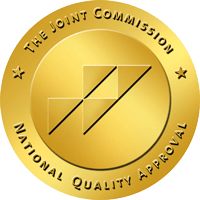Rehab for drug and alcohol addiction takes different forms. The type of treatment plan you receive should be personalized for you. This ensures the most effective care that can lead to lower relapse rates and higher chances of a successful recovery. After residential treatment, transitional living may be appropriate. This type of program provides additional options and benefits when inpatient treatment ends.
Moving From Residential Treatment to Transitional Living
 You don’t always have to live in an addiction treatment center for residential or inpatient rehab. Some clients receive outpatient or transitional care. They may either take part in transitional treatment after a residential rehab stay, or they may receive this type of treatment because their addiction issues are minor and very short-term.
You don’t always have to live in an addiction treatment center for residential or inpatient rehab. Some clients receive outpatient or transitional care. They may either take part in transitional treatment after a residential rehab stay, or they may receive this type of treatment because their addiction issues are minor and very short-term.
It can be a step down from a 24/7 rehab stay, with ongoing clinical services. Clients will attend therapy sessions anywhere from a few to several times per week. As their recovery progresses, they’ll attend fewer meetings.
Furthermore, if you’re looking for a quality transitional living program Orange County CA offers, you have a variety of effective options.
Benefits and Drawbacks of Transitional Living in Addiction Recovery
Not everyone needs or can afford 24/7 rehab care. While residential treatment is usually best for clients with long-term, severe addiction issues, some people haven’t used that long or have mild dependency problems.
Transitional living gives them the chance to overcome drug and alcohol addiction, but it also allows them to continue fulfilling work or other obligations. For professionals with demanding careers, this type of treatment may also be the only way they can get the help they need because taking time away from their job isn’t possible.
Furthermore, they return home to sleep at night, where they’ll be in comfortable surroundings. If their home environment is toxic, however, they may reside in a sober living home during treatment.
Clients have more freedom in transitional treatment, which is something they’ll have to adjust to after leaving the safe environment of residential rehab. They must learn to manage triggers and stressors, not just in the short term but for the rest of their lives. By easing into a post-rehab life in a transitional program, they can also do this gradually.
Finding a Transitional Living Program That Suits You
Although clients have more freedom in transitional living, they must still participate in treatment to receive the benefits of it. This means showing up for all therapy sessions and completing any homework assignments counselors give them.
Are you looking for the best transitional living program Orange County CA offers? Whether you’re a busy professional who needs treatment that fits into your life or you’re ready to step down from around-the-clock treatment, Pillars Recovery has quality options for you.
Drug and Alcohol Addiction Recovery for Young Men and Women
In Orange County, young professionals can take part in state licensed, Joint Commission accredited addiction treatment programs at Pillars Recovery. Under professional supervision, clients will receive a full spectrum of personalized care, from Comfort Detox all the way through aftercare. If you’re seeking the most effective transitional living program Orange County CA provides, we offer that as well.
Our programs include:
- Residential treatment program
- Intensive outpatient program (IOP)
- Medication assisted treatment
- Partial hospitalization program (PHP)
- LGBTQ affirmative therapy
- Massage therapy
- Acupuncture
It’s not easy admitting that you need help for drug and alcohol addiction. But the compassionate professionals at our treatment facility are ready to guide you every step of the way toward better health and a brighter future. Reach out today at 866-782-0247, and we’ll support you throughout your recovery journey.
